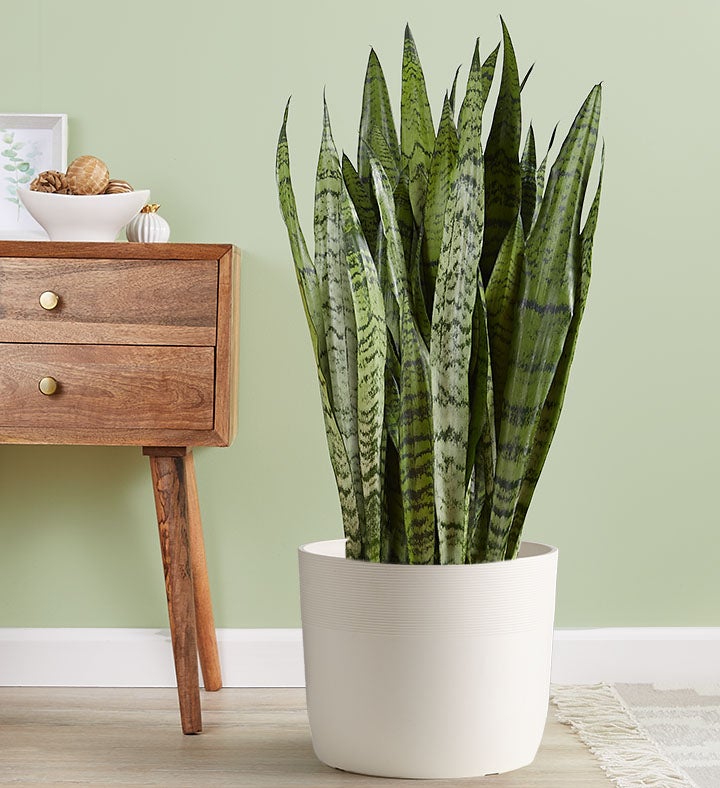Because of their attractive, erect leaves and their ability to filter the air, snake plants are a common and low-care indoor plant. Did you know, however, that new snake plants may be simply propagated from an already established mother plant? Propagation is an excellent alternative for both novice and seasoned gardeners because it allows you to increase your plant collection without spending a lot of money.
Growing interest in indoor gardening and the benefits of plants for mental health and well-being are anticipated to boost the global market for indoor plants to over $2.6 billion by 2027, according to a recent study.
This page will provide a comprehensive tutorial on how to propagate snake plants, including a breakdown of the various propagation techniques, a list of the supplies you’ll need, and solutions to some of the more typical issues you may face.
After reading this guide, you’ll have all the tools you need to start your own snake plant propagation and grow your indoor garden.
Understanding Snake Plant Propagation
Definition of Propagation
The technique of creating new plants by multiplying existing plant stock is referred to as propagation. It is a frequent practice among gardeners and those who are passionate about plants to cultivate additional plants for the purpose of adding them to their collection, giving them to friends, or using them to replace older or more damaged plants.
Different Methods of Propagation
There are several methods of propagating plants, including:
- Seed propagation: This involves starting new plants from seeds.
- Stem cuttings: This method involves taking a stem cutting from a parent plant and rooting it in water or soil.
- Leaf cuttings: This method involves taking a leaf cutting from a parent plant and rooting it in water or soil.
- Division: This method involves dividing a parent plant into smaller sections and repotting them as individual plants.
Related: Snake Plants Care: From Watering to Light Requirements
Explanation of Why the Division Method is the Best for Snake Plants
Because snake plants are naturally predisposed to spread by underground rhizomes, the division method is the most effective means of propagating these plants. These rhizomes have the ability to be divided and transplanted in order to produce new snake plants. A couple of the reasons why the division process works so well with snake plants are as follows:
- Simplicity: The method of dividing a snake plant is simple and does not call for any specialized knowledge or tools. It’s safer than other methods, such as stem or leaf cuttings, which can be tricky to get right.
- Healthier plants: By eliminating the old, dead, or diseased parts of the plant, dividing a snake plant is akin to giving it a new lease of life. In doing so, the plant’s remaining parts are able to flourish, and new growth is stimulated.
- Faster results: Growing plants from seeds might take a long time, but the division process yields healthy plants almost immediately. You can replant your snake plant right away after dividing it, and the new pieces will start growing again in a few weeks.
Materials Needed for Propagation

List of Materials Needed for the Division Method
For division-based snake plant propagation, you’ll need the following:
- Pruning shears or a sharp knife
- A clean, sharp garden trowel or shovel
- A container or pot filled with well-draining soil
- Water
Explanation of Where to Get the Materials
The majority of everything you’ll need to divide snake plants and start new ones is sold at garden center and nurseries. A clean, sharp garden trowel or shovel can be acquired at a gardening center, and pruning shears or a sharp knife can be purchased at a hardware store.
Make sure the pot or container you select for your new snake plant includes drainage holes to avoid the rot that might result from standing water. Succulents prefer well-drained soil, so you can also use potting mix designed for them.
As with other plant species, water is a must when it comes to growing snake plants. Always use purified water, and if you can, let it sit out overnight to let the chlorine and other contaminants evaporate.
You may get everything you need from a garden center or nursery to divide your snake plants and start new ones.
Step-by-Step Guide to Propagation

Preparing the Mother Plant
Make sure the mother snake plant is disease- and pest-free before you try to establish a new generation. For the same reason, you should water the plant a few days before you intend to propagate it, so that the soil is nice and damp.
Separating the Baby Plants
Carefully cut the snake plant’s roots with pruning shears or a sharp knife, then plant them in a new container. To reveal the rhizomes, carefully shake off the excess soil. There should be a clear separation between the rhizomes and the developing plant parts. Make sure each new part has its own set of healthy leaves and roots, then cut it out using your pruning shears or a sharp knife.
Preparing the Baby Plants for Planting
To stimulate fresh growth once you’ve separated the seedlings, you should prune their roots. Remove any diseased, damaged, or overly long and knotted roots using your pruning shears or a sharp knife. It will promote new root development and protect against root rot.
Planting the Baby Plants
Plant the seedlings in their new containers once you’ve prepared the soil. Carefully place the seedling in a container with well-draining soil, making sure to provide some area for the roots to grow. Carefully plant the seedling in the dirt so that its roots are submerged but its leaves are still visible. For further stability, push the earth gently around the plant’s roots.
Aftercare for the New Plants
To keep your new snake plants healthy, you’ll need to care for them. Make sure the soil is wet but not soaked when watering fresh plants. Overwatering causes root rot. Avoid direct sunlight and place fresh plants in bright, indirect sunshine.
Troubleshooting

Common Problems During the Propagation Process
The method of propagating snake plants is simple, however there are a few frequent issues that may arise. All of these things:
- Root rot: This can happen if the new plants are overwatered or if the soil doesn’t have proper drainage.
- Stunted growth: This can happen if the new plants don’t receive enough sunlight or if they’re not getting enough nutrients.
- Leaf drop: This can happen if the new plants are overwatered or if they’re exposed to cold temperatures.
How to Fix These Problems
- Avoid overwatering new plants and ensure well-draining soil to prevent root rot. If your plant has mushy or discoloured roots, cut them and repot them in fresh soil.
- Make sure new plants get adequate sunlight and nutrients to flourish. Use a balanced fertiliser and bright, indirect sunlight to nourish new plants.
- Avoid overwatering and freezing new plants to prevent leaf drop. Keep new plants warm and humid and away from draughty windows and doors.







